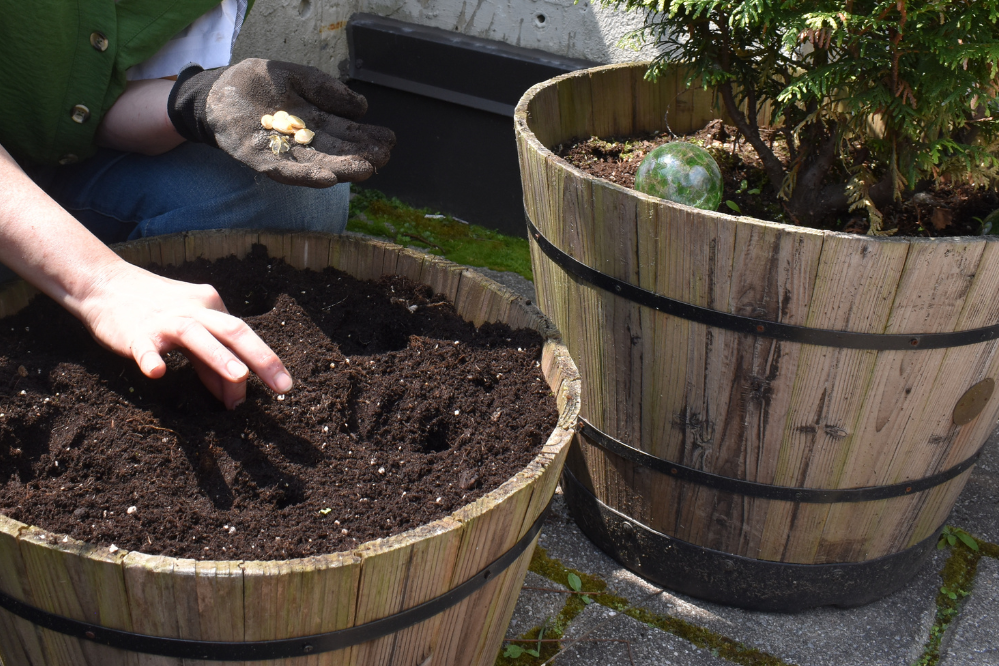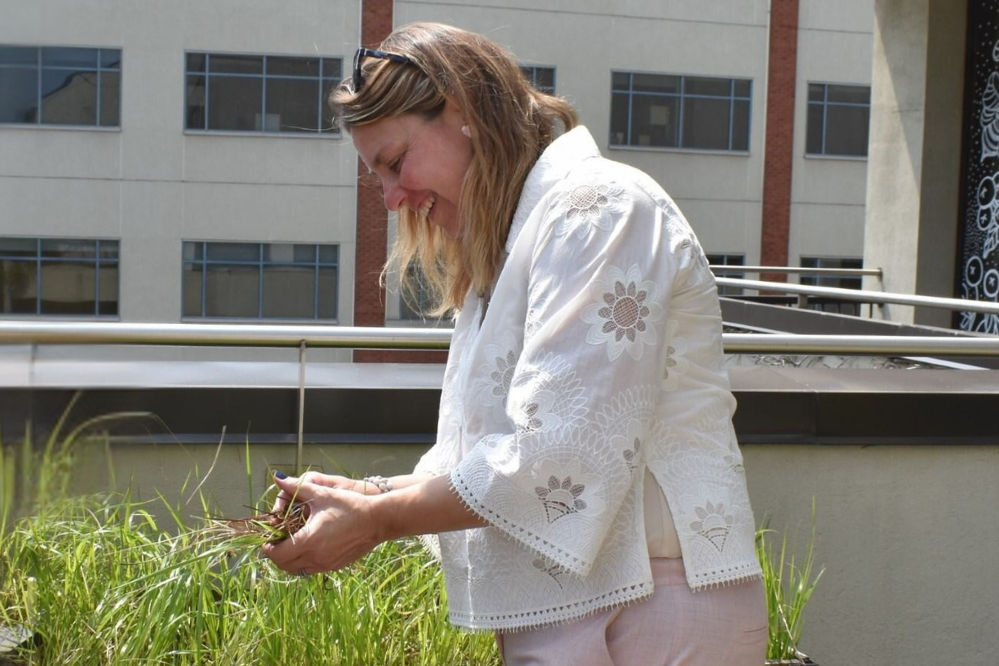Running alongside the Fauteux terrace, the Spirit Garden is a freshly planted space. Begun in 2019, it was born of a profound desire to decolonize university space and establish a concrete place of reconciliation at the very heart of the Faculty of Law. It bears witness to the continuity of Indigenous knowledge, practices and traditions that long predate the walls that surround it, knowledge that has endured since time immemorial.
Every spring, the community gathers in the Garden to prepare it for a new growing season. This is not ceremonial nor a formal event; it's a moment of sensory, hands-on learning and of knowledge transfer, as seasoned green-thumbs share their expertise with new gardeners.

Gather and grow
Gardening tools in hand, a dozen faculty and staff members gathered in the Spirit Garden for its annual restoration. Each seed planted, each weed pulled, contributes not only to the regrowth of sacred medicines, but also to the transmission of Indigenous traditions and knowledge.

For, as Tasha Simon, Senior Specialist, Indigenous Programs, reminds us that "everything is a relationship;" what we offer to the earth comes back to us in other ways, in healing, in memory and in connection.

The Garden's 4 sacred medicinal plants don't just grow; they teach.
Tobacco teaches first
We always offer it first, out of respect. It reminds us that every relationship, whether corporeal or spiritual, begins with a clear intention. Tobacco is not consumed; it is offered as a symbol of recognition and willingness. Once used in ceremonies, medical care or to seal alliances, it represents listening, gratitude and connection. In a world where we often act hastily, it invites us to slow down and to reflect before any word or action.
Sage teaches through clarity
When it burns, its rising smoke gently envelops the space, dissipating heavy thoughts and useless judgments. It doesn't just purify the air: it purifies the mind. Beyond its soothing properties, its smoke is perceived as a channel that raises prayers to heaven and attracts benevolent energies. Sage reminds us that to think rigorously, we must first clear our minds.
Sweet grass teaches through gentleness
Braided into three strands - representing body, mind and soul for some, or love, kindness and honesty for others - it is synonymous with harmony. Its sweet fragrance attracts good intentions, good presence, and consequently evokes memories of tender gestures and caring relationships. It teaches what few classrooms do: that kindness is a quiet force, and when it guides our actions, it is transformative.
Cedar teaches through protection
Finally, cedar has purifying properties and can be used for many restorative purposes, such as cedar baths, which can provide healing or protection. When burned or infused, it surrounds and strengthens. With its quiet strength, it reminds us that true protection is an act of care.

Through the cycles of the seasons, the Garden reminds us that healing also requires patience, community and attention to what grows slowly.
Together, the four sacred plants reflect the profound vocation of law: not to erect walls, but to weave a system rooted in respect, which repairs, connects and protects.
